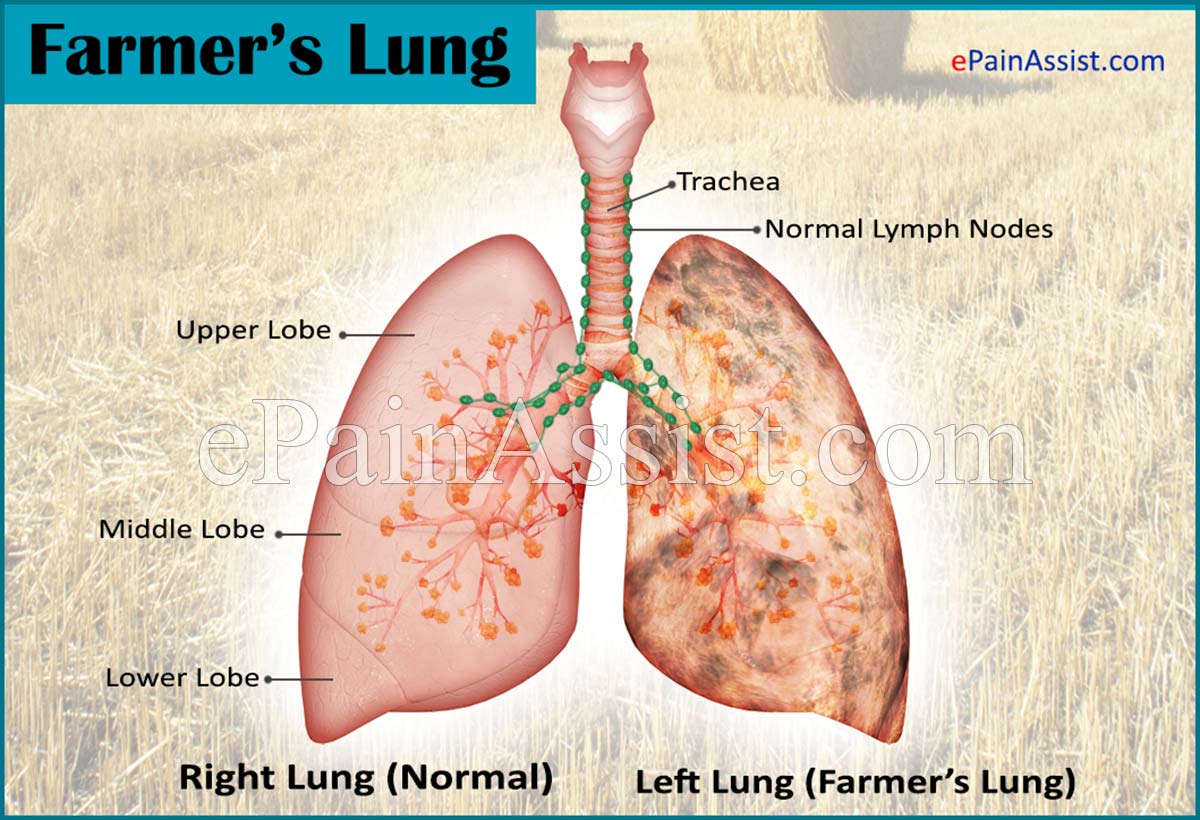What Is Farmer’s Lung?
Farmer’s Lung is a disease which is caused by chronic inhalation of spores from moldy hay. It is usually seen in people who work with hay. As the time progresses, some people may become allergic to this mold present in the hay thus causing symptoms. As the exposure to this moldy hay becomes chronic, symptoms of respiratory illness start to surface. Once an individual starts having symptoms, there is a high likelihood that he or she will always be at risk for having symptoms whenever being exposed to hay mold.

What Are The Causes Of Farmer’s Lung?
Farmer’s Lung as stated is caused due to exposure to spores of hay mold, especially in places which does not have good ventilation like a barn.
What Are Some Of The Symptoms Of Farmer’s Lung?
After being exposed to moldy hay for a significant amount of time, the individual will start to notice following symptoms:
- Increased coughing with abnormal production of phlegm
- Fever with at times chills
- Shortness of breath
- A tightness sensation in the chest.
How Is Farmer’s Lung Diagnosed?
To diagnose Farmer’s Lung, the treating physician will first take a detailed history, especially the occupational history to look for exposure to moldy hay. After that, a blood draw may be performed along with a chest x-ray and pulmonary function test to look at the functioning of the lungs. At times, there may be other tests that may be required for a confirmatory diagnosis of Farmer’s Lung.
What Are The Treatments For Farmer’s Lung?
The gold standard for treatment for Farmer’ Lung is to stay away from moldy hay. Apart from this, medications may be given for control of symptoms but use of medications may not prove effective until exposure to hay is completely stopped. Administering corticosteroids is one of the main treatments for this condition.
How Can Farmer’s Lung Be Prevented?
- Make use of an open barn or a barn with good ventilation.
- Use mold inhibitors.
Also Read:
- Byssinosis or Brown Lung Disease or Monday Fever: Causes, Signs, Symptoms, Diagnosis, Treatment, Prognosis
- Pneumoconiosis or Black Lung Disease: Symptoms, Diagnosis, Treatment, Prevention, Who is at Risk
- Bird Fancier’s Lung: Causes, Symptoms, Diagnosis, Treatment, Prevention
- Chronic Obstructive Lung Disease or Chronic Obstructive Airway Disease
- Occupational Lung Disease: Causes, Symptoms, Treatment, Prevention
- Anatomy of Lungs & its Functions, Role of Lungs in Respirations & Talking, Tips to Keep Lungs Healthy
